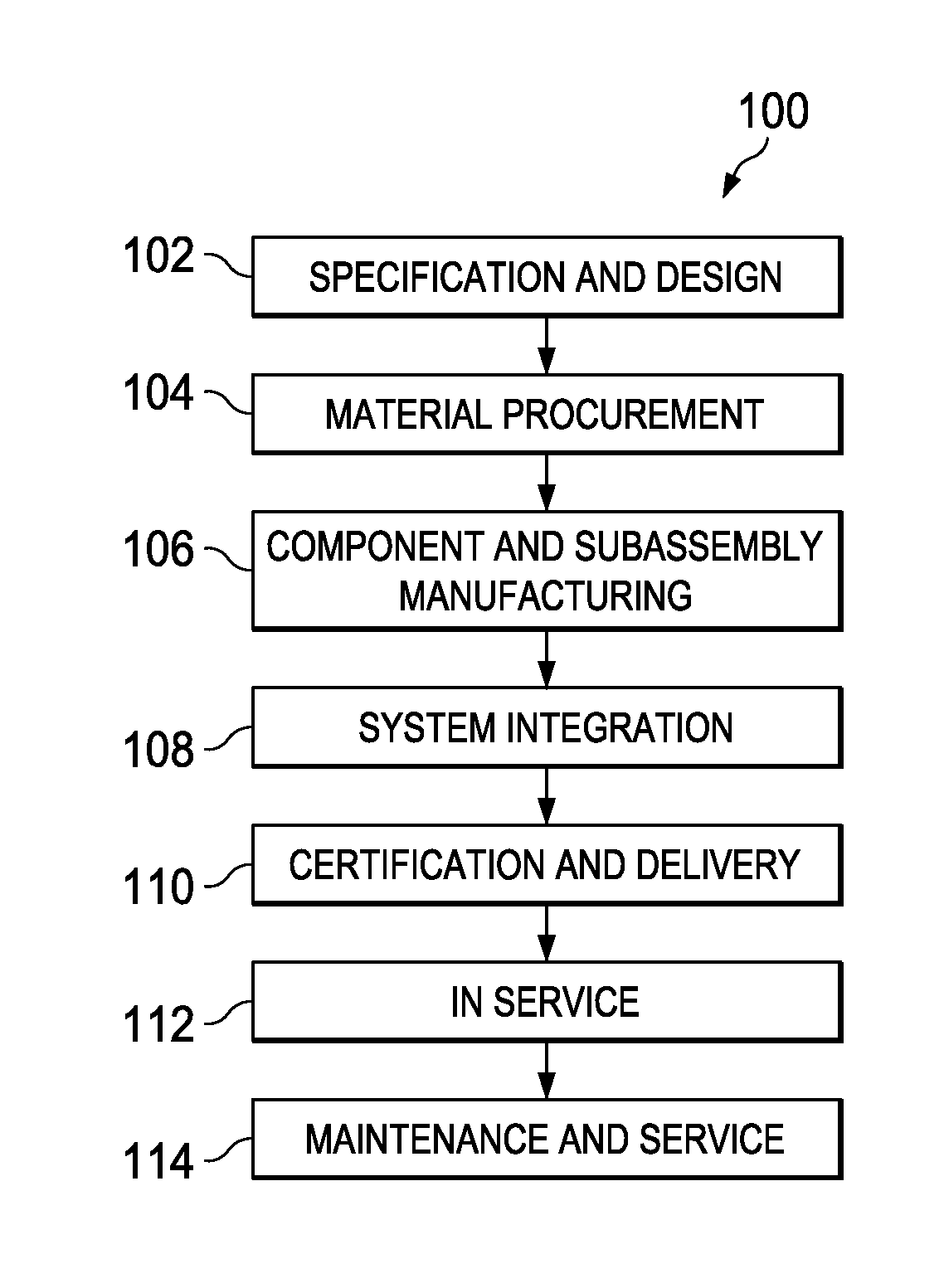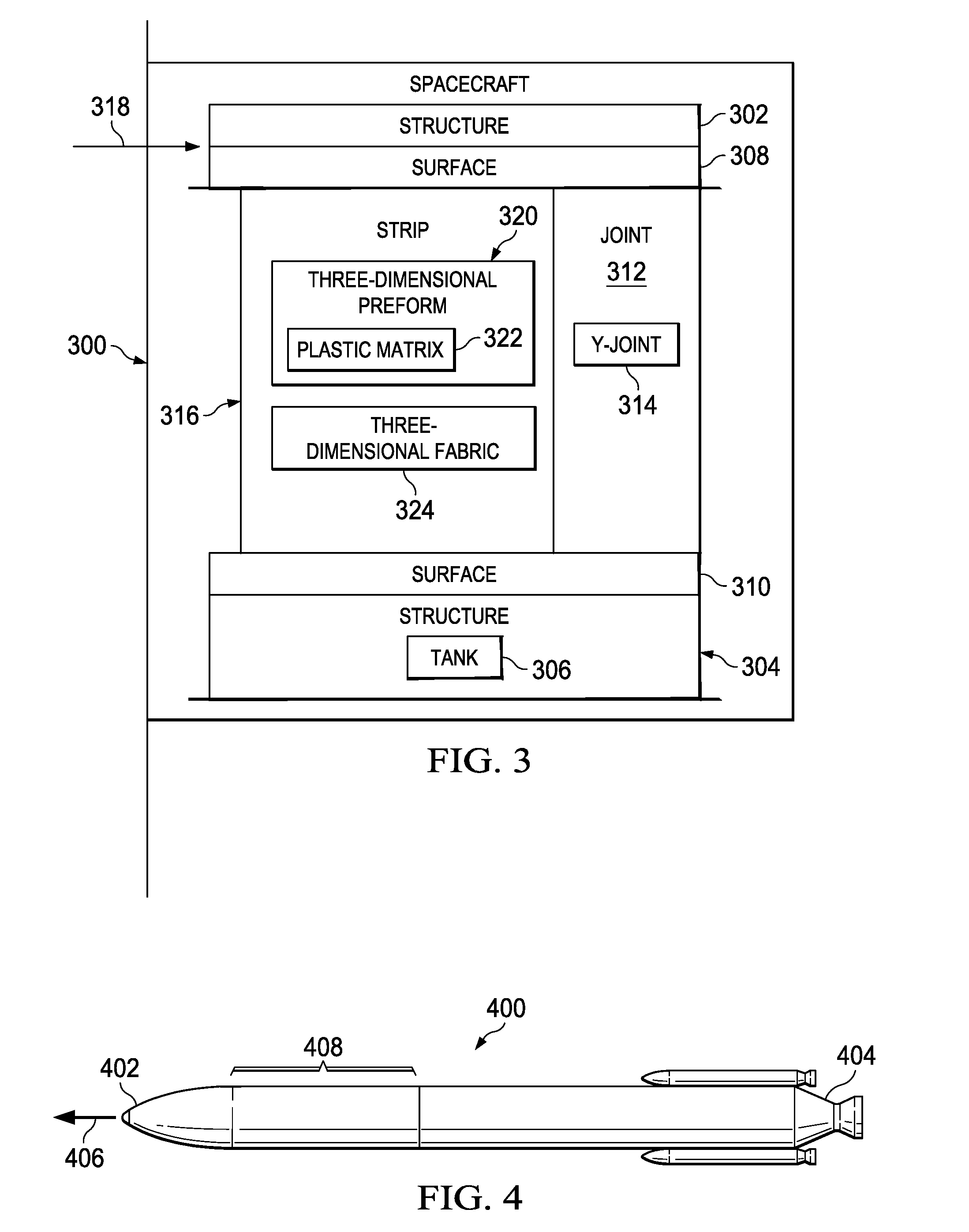Composite Tank Having Joint with Softening Strip and Method of Making the Tank
a technology of composite tanks and joints, applied in the field of composite structures, can solve the problems of unacceptably high joint peak stress levels, joint leakage, and many other conventional materials that may not remain soft, but instead harden, and achieve linear joint stress, reduce joint peak stress levels
- Summary
- Abstract
- Description
- Claims
- Application Information
AI Technical Summary
Benefits of technology
Problems solved by technology
Method used
Image
Examples
Embodiment Construction
[0037]Referring more particularly to the drawings, embodiments of the disclosure may be described in the context of the spacecraft manufacturing and service method 100 as shown in FIG. 1 and spacecraft 200 as shown in FIG. 2. Turning first to FIG. 1, a diagram illustrating a spacecraft manufacturing and service method is depicted in accordance with one disclosed embodiment.
[0038]During pre-production, exemplary spacecraft manufacturing and service method 100 may include specification and design 102 of spacecraft 200 in FIG. 2 and material procurement 104. During production, component and subassembly manufacturing 106 and system integration 108 of spacecraft 200 in FIG. 2 takes place. Thereafter, spacecraft 200 in FIG. 2 may go through certification and delivery 110 in order to be placed in service 112. While in service by a customer, spacecraft 200 in FIG. 2 is scheduled for routine maintenance and service 114, which may include modification, reconfiguration, refurbishment, and othe...
PUM
| Property | Measurement | Unit |
|---|---|---|
| diameter | aaaaa | aaaaa |
| diameter | aaaaa | aaaaa |
| temperatures | aaaaa | aaaaa |
Abstract
Description
Claims
Application Information
 Login to View More
Login to View More - R&D
- Intellectual Property
- Life Sciences
- Materials
- Tech Scout
- Unparalleled Data Quality
- Higher Quality Content
- 60% Fewer Hallucinations
Browse by: Latest US Patents, China's latest patents, Technical Efficacy Thesaurus, Application Domain, Technology Topic, Popular Technical Reports.
© 2025 PatSnap. All rights reserved.Legal|Privacy policy|Modern Slavery Act Transparency Statement|Sitemap|About US| Contact US: help@patsnap.com



